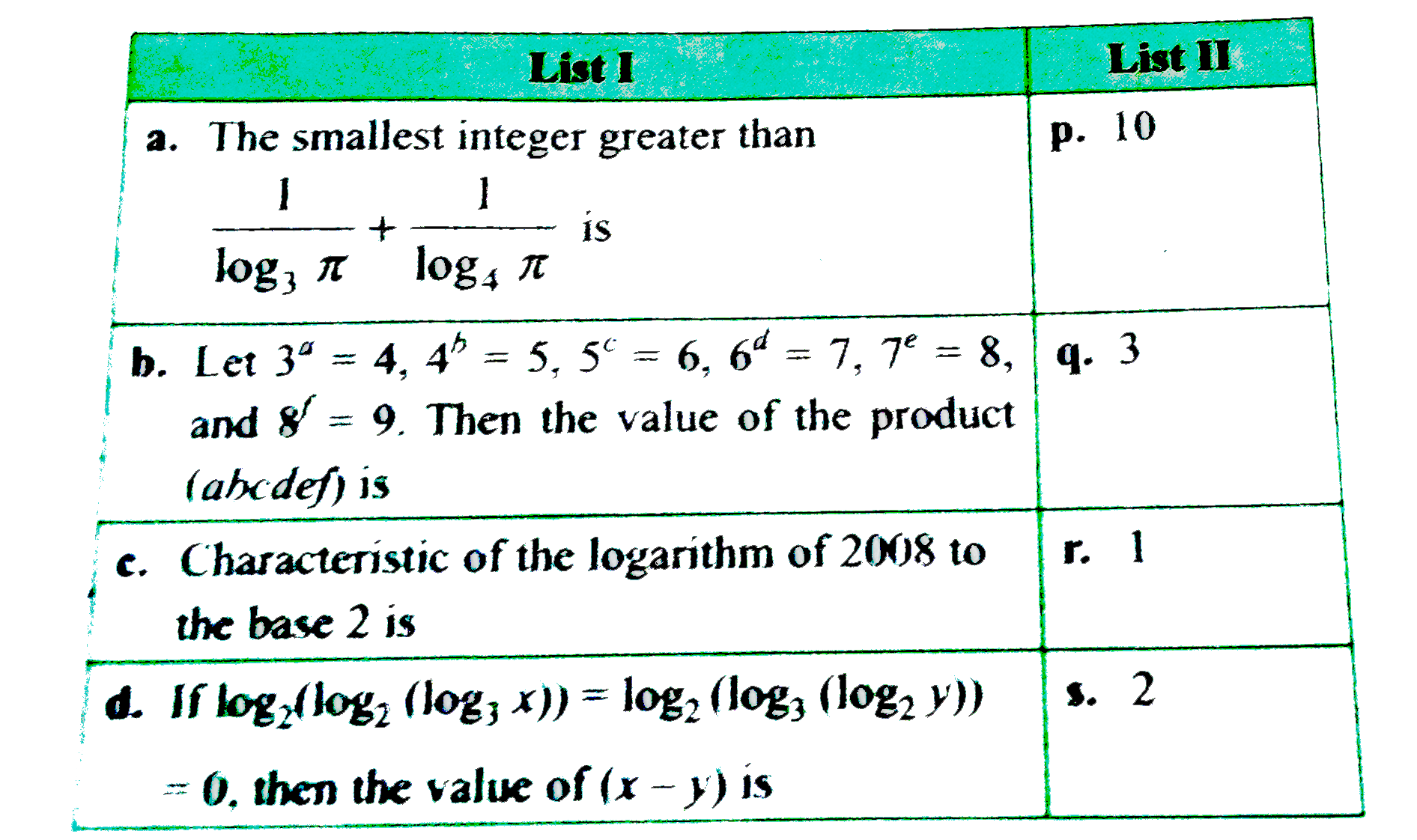If log1/2(4−x)≥log1/22−log1/2(x−1),then x belongs to Solution in Tamil
(1,2]
[3,4)
(1,3]
[1,4)
The correct Answer is:A, B
log1/2(4−x)≥log1/22−log1/2(x−1)
orlog1/2(4−x)(x−1)≥log1/22
or(4−x)(x−1)≤2
orx2−5x+6≥0
or(x−3)(x−2)≥0
orx≥3orx≤2
But x∈(1,4)
⇒x∈(1,2]∪[3,4)
Topper's Solved these Questions
- LOGARITHM AND ITS PROPERTIESBOOK - CENGAGECHAPTER - LOGARITHM AND ITS PROPERTIESEXERCISE - Exercise (Comprehension)
6 Videos
- LOGARITHM AND ITS PROPERTIESBOOK - CENGAGECHAPTER - LOGARITHM AND ITS PROPERTIESEXERCISE - Exercise (Matrix)
3 Videos
- LOGARITHM AND ITS PROPERTIESBOOK - CENGAGECHAPTER - LOGARITHM AND ITS PROPERTIESEXERCISE - Exercise (Single)
50 Videos
- LOGARITHM AND ITS APPLICATIONS BOOK - CENGAGECHAPTER - LOGARITHM AND ITS APPLICATIONS EXERCISE - Subjective Type
9 Videos
- MATHMETICAL REASONINGBOOK - CENGAGECHAPTER - MATHMETICAL REASONINGEXERCISE - JEE Previous Year
10 Videos
Similar Questions
Find the value of x satisfying the equations log3(log2x)+log1/3(log1/2y)=1 and xy2=9
View Solution
View Solutionlog418 is
View SolutionFind the value of x satisfying the equations log3(log2x)+log1/3(log1/2y)=1 and xy2=9
View SolutionStatement-1: ~(p↔~q) is equivalent to (p↔q).
Statement-2: ~(p↔~q) is a tautology.
View Solutionlog_((3)/(4))log_(8)(x^(2)+7)+log_((1)/(2))log_((1)/(4))(x^(2)+7)^(-1)=-2
View Solutionlog_(2)(x^(2)-1)=log_((1)/(2))(x-1)
View Solution(log_(2)x)^(2)+4(log_(2)x)-1=0
View Solutionlog_(2)(4^(x)+4)=log_(2)2^(x)+log_(2)(2^(x+1)-3)
View Solutionlog_(4)(x^(2)-1)-log_(4)(x-1)^(2)=log_(4)sqrt((4-x)^(2))
View SolutionThe set ofall the values of x for which log_((1)/(4))(2-x)>log_((1)/(4))((2)/(x+1)) is
View Solutionlog_((3)/(4))log_(8)(x^(2)+7)+log_((1)/(2))log_((1)/(4))(x^(2)+7)^(-1)=-2
View Solutionlog_(2)sin x-log_(2)cos x-log_(2)(1-tan x)-log_(2)(1+tan x)=-1
View SolutionIf log1/2(4−x)≥log1/22−log1/2(x−1),then x belongs to
View SolutionIf log_(2)(5.2^(x)+1),log_(4)(2^(1-x)+1) and 1 are in A.P,then x equals
View SolutionIf log1/2(4−x)≥log1/22−log1/2(x−1), then x can belong to
View Solution
